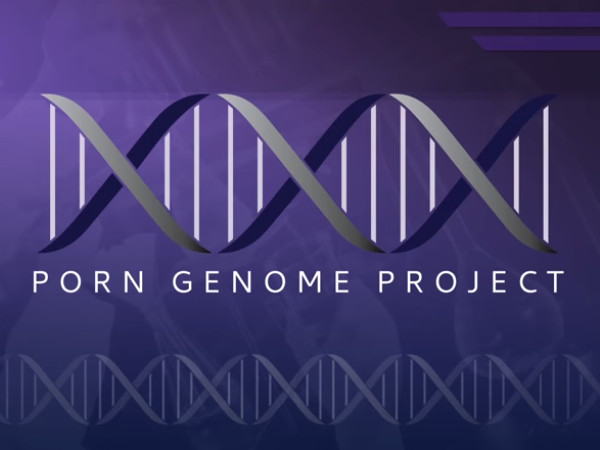Cracking the Porn Genome: ‘Do It. For Science’
 LONDON, Canada – What is and isn’t pornography?
LONDON, Canada – What is and isn’t pornography?
How can pornography be categorized in psychologically meaningful ways?
How can we use a refined understanding of pornography to build a more nuanced understanding of its effects on consumers, both positive and negative?
Those are among the questions a team of Canadian researchers hope to answer with an as-yet-unfunded private project to sequence the “porn genome.” Their goal is to do for pornography what DNA research did for botany and zoology.
“To study pornography in unprecedented resolution, we are looking to build an application that will allow us to crowd-source the identification and organization of thousands of detailed features (or “genes”) that make up pornographic imagery,” said lead researcher Taylor Kohut, PhD, a social psychologist at the University of Western Ontario. “By truly understanding what you see when you look at porn, we will be better able to show you exactly what you want to see.
“It is quite possible that we are out to lunch,” Kohut added during a conversation with Randy Richmond of the London [Canada] Free Press. “I will throw that out there.”
Kohut has studied pornography academically for about 10 years. He’s a Very Serious Scientist who has published 17 articles in peer-reviewed outlets and given 40 conference presentations.
He’s also suffered the slings and arrows of outraged anti-porn activists. Porn critics, it seems, are skeptical of investigative results indicating the stigma attached to porn, not porn itself, harms relationships. Even more threatening to the status quo: Porn users tend to be more egalitarian in their views regarding women than those who eschew porn. Heaven forbid anyone encourage intellectual liberals.
All of those things contributed to Kohut and his colleagues taking the porn genome project outside the bounds of ivy-covered walls, circumventing the social and political pitfalls of formal grants by crowdfunding their scientific endeavor.
“I study what porn is,” Kohut told Richmond. “I study how it impacts the way people think, feel, behave, and I would like to one day study why it is people choose what they do and not other things. To answer all of those questions, you need to have an understanding of content.”
In order to understand the content, one must understand the people who consume the content. Kohut et al seem to have a good handle on that. To get the attention of people most likely to support the cause, they’ve approached the very serious project in a thoroughly cheeky way.
The team began by creating a fake company called Proctor and Lever, “a friendly, family owned arsenic refinery” founded in 1911. Following phenomenal success in creating numerous ways to kill almost everything, the business mushroomed, its website notes. Now P&L produces soap, shampoo, ice cream, cigarettes, condoms, diapers, patent trolling and voting machines, among other things. The company is possibly most proud of its Porn for Science Industries subsidiary, which has been responsible for breakthroughs in Pubic Entanglement, Scrödongers Paradox and Tampon String Theory. (If you’re not a science nerd, none of that will be amusing. Just go with it.)
Despite the humorous approach, Kohut is extremely serious about the research. The crowdfunding campaign seeks $50,000 to create a dynamic database capable of containing “the thousands of features that constitute the basic genes of pornographic imagery.” Every imaginable aspect of an image is a “gene,” from body parts to the environment.
“We believe that small differences in these genetic codes make pornographic images unique from one another,” according to a video on the Porn for Science website.
Once the database is well on its way, the researchers will create a website where they “can present pornographic exemplars to the public in an interactive manner.” A mobile website will follow.
And then comes the fun part: The researchers will invite the public to participate in the genomic mapping of erotic stimuli — a sort of “masturbating for science” project, if you will. By harnessing “the collective power of amateur porn scientists,” the real porn scientists hope to bring about a legitimate revolution in scientific understanding.
“In the same way that genetic sequencing allowed for exceptional precision in classifying species of animals, sequencing the porn genome will allow us to understand, organize, and taxonomize porn in a way that is more accurate and more useful than ever before,” Kohut explained. “Rather than patronizingly assuming that a preference for blondes means all videos with blonde women are right for you, our techniques will allow us to build detailed individualized profiles of exactly what elements you want and don’t want to see in your porn.”
Aside from purely theoretical impact, the research could have striking implications for the adult entertainment industry. Imagine being able to offer viewers exactly what they want to see based on their “porn DNA.” Your bottom line would thank you for contributing to such research.
Porn: The Final Frontier. Kohut and his colleagues encourage the public to make as big a contribution in money or participation as they like.
As their motto says, “Do it. For science.”












